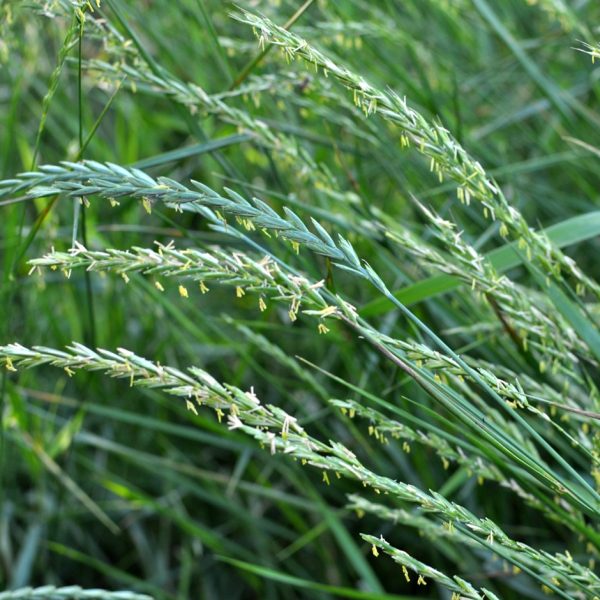Foraging is a fascinating skill that both deepens our relationship to nature and empowers our health. This article shares some interesting plants you can forage here in the UK in July.
Foraging is a wonderful way to connect both with nature, and nourish our health. We also want to spread the word about safe and ethical foraging, so please also read our article “A guide to safe and sustainable foraging” to learn how to practise foraging sustainably.
A useful link with images that can help with identification as well as botanical information is Wild Flower Finder.
In this article, Robin Harford shares some edible plants you can safely harvest from the wild in July.
Bilberry (Vaccinium myrtillus)

Bilberries are full of anthocyanins, especially delphinidins and cyanidins (2). Commonly known as European blueberry, huckleberry, or whortleberry, they carry bioactive compounds that potentially improve our health and eyesight (2). You might also hear them called blaeberry, wimberry, or whortleberry.
One traditional use of bilberries is in Finnish Mustikkapiirakka pie (3). The crust contains flour, butter, sugar, eggs, and baking powder. If you like, the filling includes bilberries, sour cream, eggs, sugar, vanilla, and cardamom. People usually serve it warm or cold, often with whipped or ice cream.
People usually eat bilberries raw, much like blueberries, but they’re softer and sweeter.
In the Balkans, people prepare sparkling fruit soda by crushing bilberries and mixing them with water, sugar, Dog rose (Rosa canina), and Oregano (Origanum vulgare) (4).
In Poland, people use bilberries in desserts and comfits, for dumpling fillings, or as a key ingredient in fruit soups (5).
Bog myrtle (Myrica gale)

Pregnant individuals should steer clear of Bog Myrtle. Fresh Bog Myrtle leaves to spice up Aalborg Pors Snaps, a homemade Danish spirit (6).
In Norway, people sell dried and powdered leaves for flavouring homemade beer and spirits (6).
People in Newfoundland use leaves as tea and fruits for flavouring roast meat (6).
People pick the leaves and fruits in early summer and dry them to enrich their scent and flavour (7).
They should store the dried leaves away from sunlight. Treat them like bay leaves when cooking, and take them out before serving.
People should carefully skim off the oil that forms during brewing when making tea. Let the tea steep in an open pot or pan, allowing the oil to evaporate. The oil is potentially toxic, so heed this warning.
These robust shrubs have aromatic leaves and resiny green berries, providing a rich, wild spice with tropical fruit notes. You can use them to flavour fish, game, and stews.
Common poppy (Papaver rhoeas)

Poppy flowers have been in food recipes since the 1700s. Despite their historical popularity, people should only eat a small amount today.
The boiled flower buds are tasty and worth trying at least once.
Both petals and seeds of the Common Poppy are edible. People in the Mediterranean use petals to decorate salads (8).
Corn poppy flowers work well in tea. People use dried flowers to colour sweets (9).
Japanese rose (Rosa rugosa)
These heavily scented flowers make a sweet pickle. They also beautify salads and can be dried for tea. But they shine when added to sweet desserts like rose petal ice cream or rose petal syrup (10).
Their taste and smell resemble damask rose, which people often use in Persian, Indian, and Middle Eastern cooking.
One study found that Rosa rugosa flowers had high antioxidant activities among 51 edible and wildflowers (11).
Pineapple weed (Matricaria discoidea)

Adding the feathery leaves of Pineapple weed to a Greek-style Horta is a great idea. After simmering the greens in salted water, strain them, let them cool, and mix them with olive oil and lemon juice.
The flowers and flower buds smell like pineapple, hence their name. They make a delicious chamomile-like tea.
You can create a delightful syrup by boiling sugar and water in a 2:1 ratio until you have 500 ml. Add a cup of Pineapple weed flower heads and simmer for 5 minutes. Let it infuse overnight, then strain and pour into sterilised bottles. It stays good for at least a year. Use it like a cordial, in cocktails, or over desserts.
Try chopping the flower heads finely and mixing them into fruit salads.
Sea purslane (Atriplex portulacoides)

Sea purslane, a seashore native, is excellent for making tangy pickles, much like samphire, another coastal plant (12).
It has thick, succulent leaves that naturally get seasoned by sea salt. This unique flavour and crunch make them perfect for salads.
Besides salads, you can stir-fry these leaves. They pair well with meat and fish, adding a unique touch to your dishes (13).
As the leaves are naturally salty, there’s no need for extra salt in a salad or vegetable dish.
After picking Sea Purslane, wash off sand or extra salt before cooking.
You can prepare it like any other vegetable. When boiled, it has a texture similar to French beans, making it a versatile meal addition.
Wild strawberry (Fragaria vesca)

Despite their small size, Wild Strawberries pack a powerful punch of sweetness and tartness. Eat them fresh or cooked, or use them to make jams, jellies, and juices.
In the Upper Reno Valley of Italy, which includes Bologna and Tuscany, they make a lightly fermented syrup from Wild Strawberries. They fill a jar with strawberries and sugar, let it sit in the sun for 40 days, and filter and bottle it. You can dilute it with twice the amount of water and drink it (15).
Young leaves are good raw or cooked. They’re great in salads or as a green vegetable (14).
People use fresh or dried leaves as a substitute for tea. Some also include dried fruit in the tea.
In India, people use the root as a coffee substitute (16).
References
- Wildlife and Countryside Act 1981. Accessed September 14, 2022. https://www.legislation.gov.uk/ukpga/1981/69/section/13
- Chu W kwan, Cheung SCM, Lau RAW, Benzie IFF. Bilberry (Vaccinium myrtillus L.). In: Benzie IFF, Wachtel-Galor S, eds. _Herbal Medicine: Biomolecular and Clinical Aspects_. 2nd ed. CRC Press/Taylor & Francis; 2011. Accessed June 20, 2023. [http://www.ncbi.nlm.nih.gov/books/NBK92770/](http://www.ncbi.nlm.nih.gov/books/NBK92770/)
- Mihir. Helsinki Food: 24 Traditional Foods You Must Try in Helsinki. Nomad Epicureans. Published June 4, 2023. Accessed June 20, 2023. [https://www.nomadepicureans.com/europe/finland/helsinki-food/](https://www.nomadepicureans.com/europe/finland/helsinki-food/)
- Quave CL, Pieroni A. A Reservoir of Ethnobotanical Knowledge Informs Resilient Food Security and Health Strategies in the Balkans. _Nature Plants_. 2015;1(2):14021. doi:[10.1038/nplants.2014.21](https://doi.org/10.1038/nplants.2014.21)
- Luczaj L, Szymanski WM. Wild Vascular Plants Gathered for Consumption in the Polish Countryside: A Review. _Journal of Ethnobiology and Ethnomedicine_. 2007;3(1):17. doi:[10.1186/1746-4269-3-17](https://doi.org/10.1186/1746-4269-3-17)
- Simpson MA, Macintosh D, Cloughley J, Stuart AE. Past, Present and Future Utilisation of Myrica Gale (myricaceae). _ECONOMIC BOTANY_. 50.
- Bog Myrtle – Myrica Gale: Edible & Medicinal Uses of the Bay Leaf of Wild Plants – Song of the Woods. Published November 4, 2022. Accessed June 21, 2023. [https://www.songofthewoods.com/bog-myrtle-myrica-gale/](https://www.songofthewoods.com/bog-myrtle-myrica-gale/)
- Ahlberg M. _Local Wild Edible Plants (WEP) Practical Conclusions from the Latest Research_. Independently published; 2020.
- Fleischhauer SG, Spiegelberger R, Guthmann J. _Enzyklopädie Essbare Wildpflanzen: 2000 Pflanzen Mitteleuropas; Bestimmung, Sammeltipps, Inhaltsstoffe, Heilwirkung, Verwendung in der Küche_. AT-Verlag; 2020.
- Zachos E. Backyard Foraging: 65 Familiar Plants You Didn’T Know You Could Eat. Illustrated edition. Storey Publishing; 2013.
- Li AN, Li S, Li HB, Xu DP, Xu XR, Chen F. Total Phenolic Contents and Antioxidant Capacities of 51 Edible and Wild Flowers. Journal of Functional Foods. 2014;6:319-330. doi:10.1016/j.jff.2013.10.022
- Wyse Jackson P. Ireland’s Generous Nature: The Past and Present Uses of Wild Plants in Ireland. Missouri Botanical Garden Press; 2013.
- Mabey R, Blamey M. Food for Free. Collins; 1974.
- Larkcom J. Salads the Year Round. Hamlyn; 1980.
- Wild Plant Foods of Britain: Wild Strawberry (Fragaria vesca). Wild Plant Foods of Britain. Published August 1, 2018.
- Chopra RN, Nayar SL, Chopra IC, et al. Glossary of Indian Medicinal Plants with Supplement. Council of Scientific & Industrial Research; 1956.
































